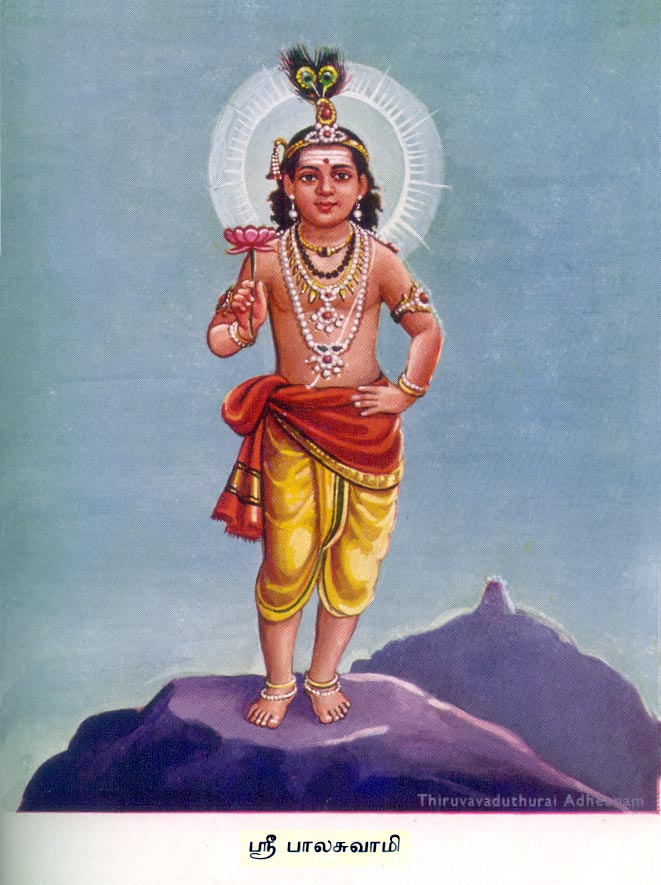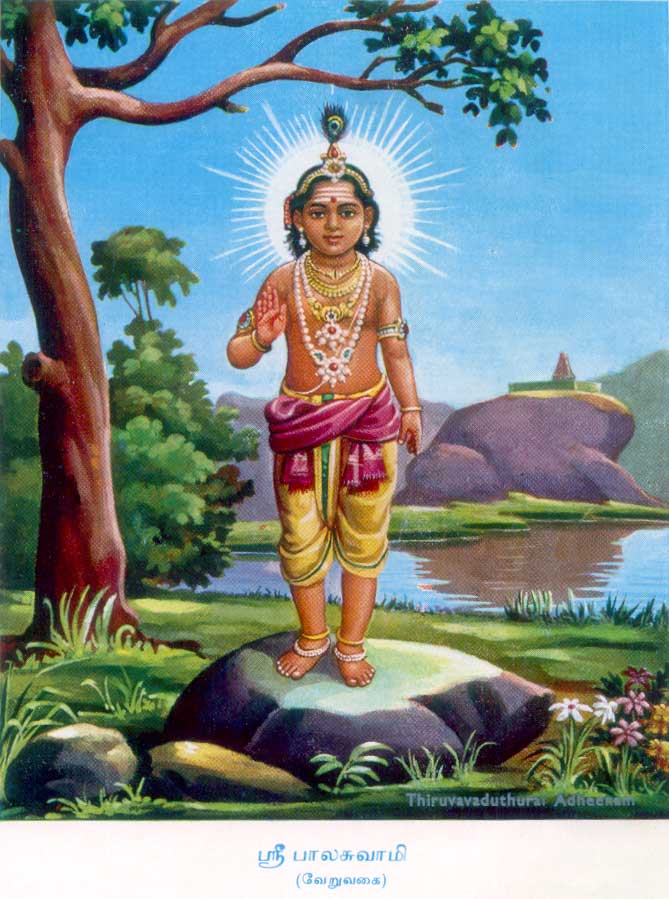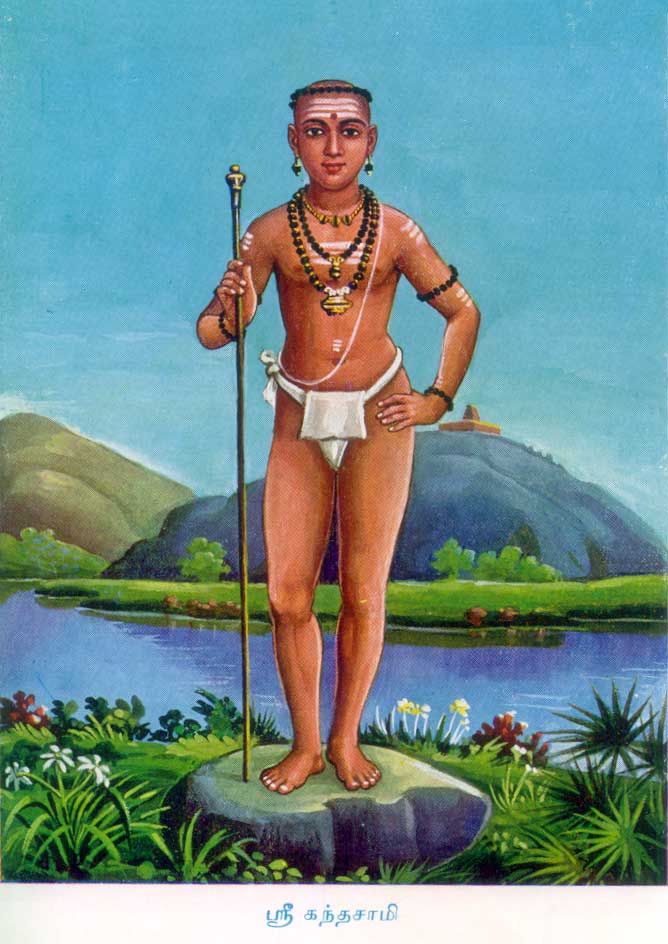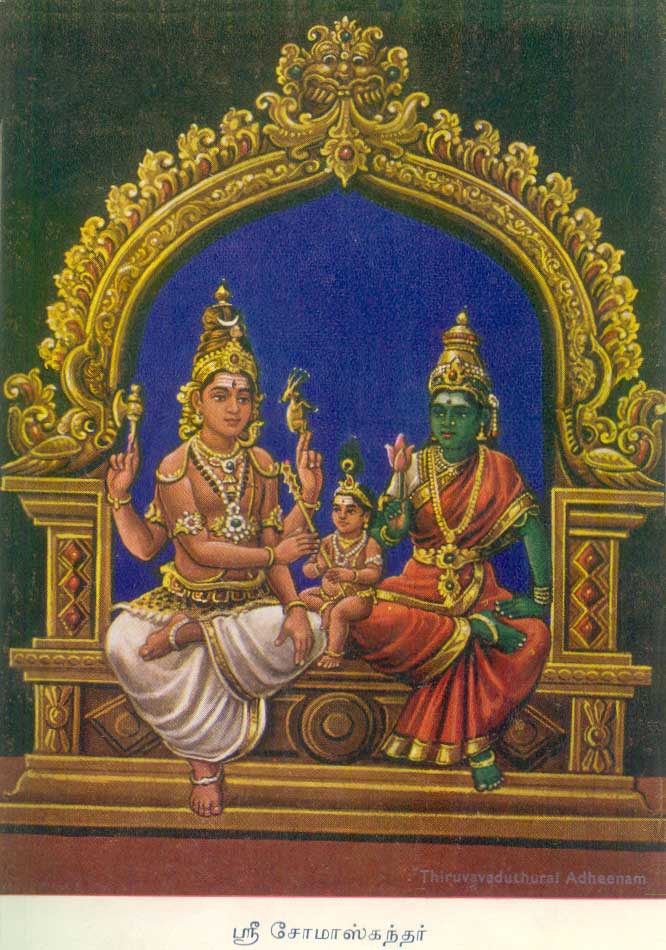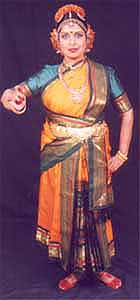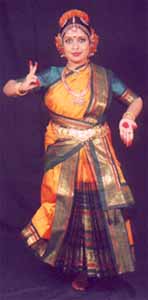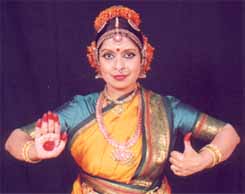
|
|||||||||||||||||
|
| |||||||||||||||||
Representations of Bala Murukan in Kunrutoradal Temples, Western Ghats, Tamil NaduPaper-demonstration for presentation at the Third International Murukan Conference, Kuala Lumpur, 2003Prof. Malati Agneswaran M.F.A., Ph.D.
Murukan is a god who symbolises youth. In his essence, Murukan is the youthful aspect of Siva, from the fiery emanation of whose eyes the Lord came to be. Siva too is the divine aspect of Surya or the sun. The ancient deity was Ceyyon the ‘Red One' (worshipped during the Cankam period), who later came to be represented by both Siva and Murukan. Concepts of divinity are derived through meditation, inspiration through intense bhakti or divine revelation—all these psychic processes may be the same stream of consciousness. Thus it may be seen that the representation of energy is the main aspect of divinity emanating in different forms. The concept of God is mentally apprehended as energy in any theological system. This cornucopia of energy is sought to be represented concretely by the artist—sculptor, painter, dancer, poet—and the divine inspiration that activates them all is the same source of energy. Energy in its initial stage is at its most powerful apex. This form of energy is contained in the concept of Murukan in his bala mode. In course of time sun worship merged with that of Siva and Surya ceased to be represented in the form of an image except in the tradition of Navagraha worship. The Siva concept or Sivatvam is one that is manifested mainly in an abstract form in the monolith or linga which symbolises energy. However, there have been other sculptural representations of Sivatvam in the form of Natarajar, Ardhanarisvarar, Daksinamurtti and so on. The energy of Siva, combined with the fiery concept of Surya emanated from the third eye of the God and the six sparks[1] became the infant Bala Murukan with six faces. In this phase Murukan is an infant boy and he still has to fulfil the purpose of his creation. Temples for Bala Murukan are seen in great numbers in the mountain tops for he is the rising Surya from the heights. Siva resides on Mount Kailasa and Sakti as Parvati is the daughter of the King of Mountains. Murukan is the Lord of hill terrain and his temples which worship him as Bala Murukan are situated on mounts, especially in the mountain ranges of the Western Ghats in the western border of Tamil Nadu. The western ranges were the original abodes of the kuravars who were a hill tribe whose deity was Murukan. As Valli, the second wife of Murukan had been brought up by a kuravar community, she had worshipped Murukan and longed for wedded bliss with him. The early legends of Murukan were retold and sung by the kuravars. In course of time Murukan came to be worshipped by other communities as well and temples were built around the simple shrines of Murukan in the original places of worship. These abodes of Bala Murukan are known as kunrutoradal group of temples. In these temples Murukan is the main deity and he is worshipped in his Bala Murukan form. The temples reinforce the association of Murukan with the mountains and with dance which is again the activity of Siva symbolising vibration leading to creation.[2] Hence Murukan is said to ‘dance on each mount', which is the literal translation of kunrutoradal. The ancients 'saw' with their inner eye or concentration, the concrete symbols of the Divine concept and this was immortalised in iconographic representations which are worshipped in temples, in the sannidis of the different deities. These representations of Divinities have in their turn, inspired the artists of other media. There are seers who have written devotional songs (Appar, Sambandar, Sundarar, Arunagirinadar and others). The dancers reveal the iconographic details in their representations of the deity. The youthful or infant mode of Murukan is special. This is an aspect of Murukan which is known as Bala Murukan. There is the awareness of the innocence and happiness of the child in the images of Bala Murukan. However, his Bala state is different from that of Krsna who is an incarnation of Visnu. Krsna is worshipped as Bala Krsna (infant) and many are the legends around the various stages of Krsna's infancy. During this period, Krsna's mischievous pranks and dalliance with the gopis or cowherdesses is also narrated in several puranas. Worship of Bala Krsna is significant because it is related to the bala (infancy) and kisora (youthful) phase of his life. There is later the legend of older Krsna, although for worship, it is the Bala Krsna phase which is significant. Bala Murukan legends are largely about his mock fights with his brother Ganesa, his fight with Lord Indra and so on. Many of these are prevalent only in the Tamil tradition. However, these legends, except those such as his fight over a fruit with his brother, do not feature in his worship. In the case of Murukan the deity fulfils the purpose of his birth during his bala mode itself. The only legends that come in the later period are those of his marriages and these too are actually in the phase of his youth. Murukan is a thus an eternally youthful deity unlike Siva, Visnu and others but in the Bala Murukan phase there is a special charm about the concept of youthful innocence tinged with exuberance. It may be seen that the deity is full of the light of innocence and joy that can only be seen in one who is very young. Bhaktars have imagined the form of Bala Murukan in a myriad ways. Guru Mahalingam Pillai had visualised in his dance composition, the infant Murukan in six lotus flowers in the saravana poygai or the lake with the thicket of bamboos. The vinyasas or variations in descriptions through abhinaya are:
Tiru Kirupananda Variyar describes Bala Murukan's leelai thus: Siva called his twelve-handed son who comes crawling to him. In order to get to his father, the infant Murukan climbed his mother's lap and reached his father's chest.[3] The infant saw the udukkai (hour-glass drum) in the hand of his father and with the horn of the boar lying against his father's chest, beat the udukkai happily. He saw the fire in his other hand. To put it out, he poured the water of Ganga from the Lord's hair on it, and put off the fire. The infant saw the crescent moon on the Lord's hair and the ornament of the snake. Murukan stretched out his hand, caught the crescent moon and stuffed it into the mouth of the snake. He took the arukampul malai or garland of grass and gave it in the mouth of the hungry deer in the hand of the Lord. The child danced with happiness and the dust of the holy ash arose. So the infant's body was covered with dust. Murukan wanted to have a bath to remove the dust. So he went down to the river in the Lord's hair, bathed and played in the water. Then he got down onto his father's lap and smiled. Siva and Parvati, pleased with the child, kissed him repeatedly. The sculptors have captured this bliss of infancy in wonderful ways. The images of Bala Murukan stand alone and there is a bare simplicity that enhances the spiritual innocence. The right hand generally holds the vel quite close to the body for the deity has a close association with the vel. The left hand is at the hip in the katyavalambita mudra.
Therefore, Murukan is always conceptualised as being young. The Bala Murukan aspect of the deity comes very close to that of Murukan as a brahmacari which is an aspect of being a student in his boyhood. One of the major aspects of Siva is his sattvika guna or purity. This is a purity of all-knowing quality or jnana meaning wisdom[4]. Murukan therefore represents this aspect in his Bala Murukan form of a brahmacari. A brahmacari is not simply a bachelor but is one who is twice-born, that is one who has been initiated with the sacred thread into the understanding of esoteric mantras. In this svarupam, Murukan has renounced his ornaments and weapon to assume the status of a brahmacari. The deity has a uccik kudumi (tuft) on a tonsured head, as he is a brahmacari. On his head may be a crown. The young boy carries a dandam (stick)[5] in his right hand (which is held by a boy in his state as a brahmacari) and leads the life of a mendicant, in andikkolam. The left hand is katyavalambita. A brahmacari maintains an unwedded state during the period of being a student acquiring knowledge. The dandam is said to be a staff of knowledge that dispels ignorance. This is also a period when the student lives on alms received from householders. Such an initiation is performed at a tender age and thus Bala Murukan also becomes Dandapani with a tonsured head. Among the Kunrutoradal group of temples, the acme is the Palani temple that is renowned for the deity in the form of Dandapani also known as Palaniyandavar. Often in Siva temples, the sannidi of Murukan is situated between the sannidis of Siva and Parvati. This is Somaskandar, that is, Murukan with his parents. Murukan was not born from the womb of his mother. His creation was in an esoteric manner, a fusion of energies. The significance of this union is also expressed in the inter-locking of two triangles which represent Siva and Sakti. The upright triangle is Sakti and the inverted one is Siva. Together the triangles form six corners which represent the six-faced Murukan as Arumukan or Arumukam. In iconographic representation Murukan is sometimes shown on the lap of one of his parents or as seated between them. Although Siva created several sons from his very being, none of them are given the status of Somaskandar. Even though Parvati had created Ganesa, he too is worshipped as a separate deity and is not given a place with his parents. The purpose of the creation of Murukan was the destruction of the asura Curapadman who had taken over all the worlds and had enslaved all the celestial beings. Thus as the young deity he is seen in his battles with the demons. Murukan was a warrior in his Bala stage itself. To fight this evil force Bala Murukan was given the vel (spear), which again is a combined force or energy of Siva and Sakti[6], the Mother Goddess. The legends therefore speak of the vel as being given to Murukan by Siva in some instances and by Sakti in others. The significance of the vel is jnana sakti (power of wisdom) which is given by the parent to the son to fight evil. In several temples only the vel is established to represent the deity. The vel is in front of the image of Murukan, supported by the image. The war cry of the ancient Tamil's was ‘verri vel, vira vel' (‘victorious spear, the valorous spear'). Murukan can never be seen without his vel except in his aspect as a God of Letters. When Bala Murukan holds the vel in his hand then he is with his genesis which is the linga (as the rod section of the spear) and the erect triangle, symbolising Siva and Sakti. Thus there is a trinity of Divinity which is also seen in the combination of the two triangles conjoined[7] to form the satkona yantra. The vel which is held by Bala Murukan has further implications. The vel is a weapon of war and is used subsequently by Murukan to vanquish the asuras. Holding the vel when he is still a balan symbolizes the purpose of Murukan's creation. The vel is one of the earliest of the weapons used by the Kuravars who were the main devotees of Murukan. The vel in itself represented protection to the Kuravars or the people of the hilly region known as kurinci land. Therefore the vel itself was worshipped by the Kuravars, and the priest who conducted the worship was known as Velan. When Murugan began to be worshipped as God, he came to be called Velan, and the vel became his first symbol. The other names by which Bala Murukan is known are – Balasubrahmanyam, Velayudasvami, Verrivelayudasvami, Kulandaivelayudasvami, Dandapani, Dandayudhapani and Muttukkumarasvami[8]. In the iconography of Murukan, there are three objects that are generally seen with the deity. The first is the vel to establish the status of war-god. The second is the peacock. The mayil or peacock was given to Murukan on two occasions – the first was when Indra gifted one to Murukan to be his vahana as he set out for the battle. This is said to be jnana mayil. The second peacock is one which was the form that the demon Curan assumed when he was vanquished by Murukan. This mayil is said to be asura mayil. The third object is the ceval or the cock which is the form assumed by Padman after his death. The cock is established on the flag (which is also a symbol of war and army) of Murukan. Vel is the symbol of the weapon of Murukan in the war that Murukan wins, the mayil is the symbol of the waves of the sea where the war is fought. The red crest of ceval is the symbol of the bloodshed that is the result of a war. Murukan is known as Vel Murukan as he holds the vel, Mayilvahanan as he rides the mayil and Cevarkodiyon as the insignia on his flag is the ceval. The present paper introduces the iconographic patterns and demonstrates through dance compositions in the form of Bharata Natyam, the expression of divinity as Bala Murukan. The excerpts in the text are from Kunrak Kuravai of Cilappatikaram. The dance representation recreates the iconographic imageries. And the legends of Murukan come alive vividly through the moving visuals that lend dynamism to the frozen visuals of the sculptures. The aim is to praise Bala Murukan who resides in our hearts forever and everywhere. The mode of worship differs – in song, through sculpture and through dance. The demonstration illustrates the unity of the bhaktas in their expression of devotion. Muruka – porri, porri, porri. DemonstrationThe legend of Murukan and his victory over the asuras Tarakan, Curan and Padman is retold. Also is retold the birth of Murukan in the Saravana Lake, where he slumbered in the lotus flowers, nurtured by the six Krttika maidens. The tale is re-told by the maiden of the Kuravar tribe for it is they who worship the vel in its glory in all places, by the mountains, by the waterways it is they who see Murukan in the mountain tops, in the rising sun and in the dance of the peacock: for is not Murukan their god since time immemorial and for eternity? Sundara Vel Porri Textkuruvi
oppiyum kili katintum
cirkelu centilum, cenkotum, venkunrum, erakamum[9] ninke iraivankai velanre - parirum pauvattin ulpukkup pantoru nal; curma tatinta cutarilaiya velvele! animukankal or arum, iraru kaiyum, inaiyinrit tataiyan entiya velanre - pinimukamer kontu avunar pitaliyum vannam manivicumpir konetta maratta velvele! caravanappum palliyarait taymar aruvar tirumulaippal untan tirukkaive lanre - varutikiri kolavunan marpam pilantu, kurukupeyark kunram konra netuvele! kayilainan malayirai makanai... nin tiruvati tolutem... malaimakal makanai... nin inaiyati tolutem... arumuka oruva... nin atiyinai tolutem." TranslationThe translation given here is by Alain Danielou, the renowned musicologist. We came to the mountain's green groves, [1] This is the representation of Siva's subtle energy. [2] This is the aspect of Natarajar. [3] This feature reveals that it is not possible to reach God without the grace of Goddess. [4] The aspect of Daksinamurti. [5] He carries no weapons. [6] Concept of Ardhanarisvarar. [7] One triangle is erect and it represents Sakti. It is inter-locked with the inverted triangle which is Siva. The six corners that are created by this cakra represent Murukan – this would be the abstract representation of what is suggested in Bala Murukan with the vel. [8] Muttukkumarasvami is also a form of Bala Murukan more popular in the temple of Vaittisvaran Koyil . [9] The temples mentioned here are Tiruccendur, Tiruccenkotu and two others. One is Erakam which is perhaps no more in existence but is near the present day Svamimalai. Therefore scholars believe that this is Svamimalai. Scholars are divided in their identification of Venkunram as well. Some regard it as Svamimalai but others are of the opinion that no reference to this temple has been found as yet.
Qualifications: B.A. (Hons.) German, B.F.A., M.F.A. PH.D. (Dance); diplomas in Saiva Siddhanta, Comparative Mythology and Theatre Arts. Designation: Reader & Head of Dept. of Bharatanatyam, Nalanda Nritya Kala Mahavidyalaya, Mumbai University.
"Kinetic Art Forms in the Iconograpy of Murugan" by Malati Agniswaran |
